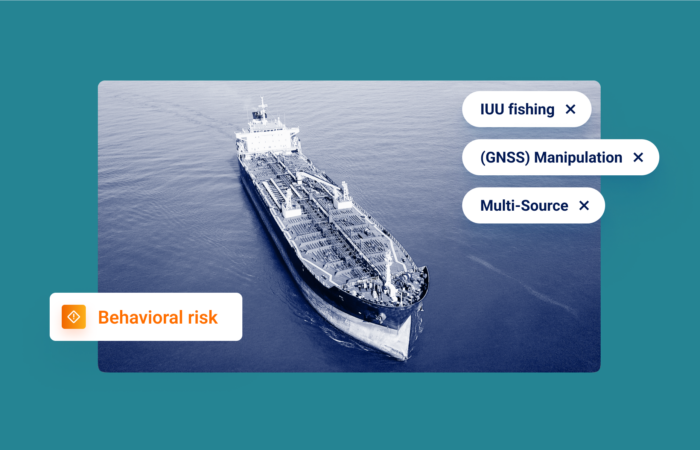Simplify Maritime Awareness: Unlock Insights for Border Security Teams

What’s inside?
Maritime domain awareness (MDA) tools help support border security. But staying ahead of bad actors can be a resource-intensive operation. Monitor your waters well, and major busts and security events can be prevented. On the flip side, a bottleneck operation can be a major setback to safely managing risk. So how do you accurately prioritize maritime threats with thousands of vessel events to evaluate? Answering this question is key to directing resources towards only the most relevant threats.
Maritime domain awareness doesn’t end at one data point and start at another; it’s about accounting for the full picture and this is only possible with the right tools. Our machine learning models are continuously trained on a database of hundreds of historical records of vessels engaged in criminal activities. This means that unique behavioral events like drifting speed, STS meetings, first-time visits, and location tampering are all evaluated in the context of their border security risk. Most importantly, our system makes it easy to identify the risk level of each vessel, so you don’t have to sort through the noise.
AI-powered maritime domain awareness
Strong vessel vetting is mission-critical for effective maritime domain awareness operations. However, it’s not a small task to take on. There are over 100,000 vessels in the global merchant fleet. And when considering non-IMO vessels, the number jumps to several more hundred vessels that are relevant to monitor. This is a key distinction because non-IMO vessels are often players in drug smuggling operations. So where do you start?
Our users can define a specific region, activity, flag, class, or any other search parameter in our system. Setting search parameters allows for a much more streamlined risk review process. Then, once you set a query, our models identify which vessels pose the greatest risk, according to your area of interest. So instead of vetting every vessel in your EEZ, your teams can react faster to emerging threats and prioritize investigation time.
Effective maritime domain awareness also depends on having a scalable way to track and compare vessel behavior over time. Why? What may be ‘normal’ for one vessel, might be a red flag for another. Take the case of a vessel that was caught by authorities with more than six tons of cocaine on board. You can see in the graph below the risk trend of the vessel, along with the main risk indicators. The red dotted line represents the risk threshold defined in our system.

Back in September 2020, Windward identified it as high-risk six months before police detained it in March 2021. Thanks to our predictive insights, organizations can identify threats before they reach an area of interest.
In addition, as shown in the graph, our models account for ownership risk and identity changes – critical in network analysis and enhanced research of entities.
Delivered via API
Each team has its framework for investigations and even if there is room for improvement, updating rules and processes can be resource-intensive. But it doesn’t have to be. By integrating your MDA tools with Windward’s global border security risk API, your command and control or C4I analysts can better manage their monitoring process, and in effect, prioritize leads for investigations. In addition, you can seamlessly integrate risk insights to existing maritime sources.
Contact us to learn more about our API integration and how it can help you boost your maritime domain awareness.













